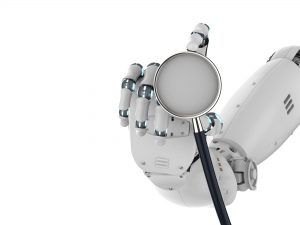Mandated years ago by the federal government, electronic healthcare records (EHR) have now been adopted by the majority of healthcare organizations across the country. The overarching goal: to have patient records that are both readily available for medical professionals and transferrable between medical providers.
However, it hasn’t always worked that way. While interoperability is often pointed to as a major issue, EHRs have been plagued by the same issue that typically occurs wherever technology and humans meet: errors.
As found in a 2017 study by The Doctors Company, the number of patient injuries in which EHRs contributed has steadily grown over the past decade. The two major culprits are poorly designed EHR systems and human error.
With EHRs in place, the focus now in healthcare is how to make them better. There are many potential solutions to this issue, both complex and simple.
Some Simple Solutions
Healthcare organizations have started to implement potential solutions. In some cases, they appear rather simple given the complexity of EHR systems and the enormity of the problem.
But, as pointed out by EHR Intelligence, these changes have resulted from research on where things go wrong with EHR.
Limited Copy/Paste Function- A study by Wang found that errors in patient records often get repeated throughout a system because medical professionals simply copy and paste inaccurate original notes. While this shortcut saves time on creating records, it also leads to repetitive errors. The study found that half of all notes were simply copied and pasted by physicians from their notes into the EHR system.
Better Interfaces- Some EHR systems have a poorly designed user interface. This can lead to several bad outcomes. Those inputting information may become confused about the right place or way to enter information. Medical physicians may find it difficult to quickly find vital information on patients. This, in turn, can slow the delivery of patient care.
Improved Education- This is a catch-all category. In many healthcare operations, those who need to access an EHR system to either input or extract information simply have not received the needed amount of training to do so with efficiency.
Standardized Regulations- Another effective path to reducing EHR errors involves the creation of accepted standards for all EHR systems.
More Complex Solutions
Looking deeper into the area of EHR errors, there are a number of other solutions that require intensive work.
Better communication– Healthcare systems that allow for the smooth, accurate transition of information from one system to another remains an elusive goal. One issue is the current lack of standardized clinical definitions for diagnostic results. Put another way, systems within healthcare speak different languages. Developing a common clinical vocabulary can reduce EHR errors.
Better tracking- Currently, most EHR systems have difficulty (or no function at all) that allows the system to know when patients experience a diagnostic change or a change in medication. The typical situation is that this information may be input into one part of the system, but not reported everywhere. Such tracking would also allow EHR systems to find gaps in care that are leading to poorer patient outcomes.
Shared infrastructure– A way to make EHR systems operate with more efficiency is to implement infrastructure changes that reflect ideas around modern innovation. These include open application programming interfaces (APIs) and Fast Healthcare Interoperability Resources (FHIR) as a data standard. Both have the potential to improve communication and collaboration between the various healthcare entities involved with a patient’s care. Another part of this is improving patient portals so patients can see their records and enter vital information of their own.
Increasing User Friendliness
Training healthcare professionals who use EHR systems and upgrading to better systems is a theme that runs through almost all the solutions to solving EHR errors. But another is the use of more user-friendly systems.
Part of the issue is customization. EHR systems “out of the box” often have interfaces that are at best not optimal and, at worse, completely confusing to doctors. Customizing interfaces for each individual physician can lead to less errors. This takes time on the part of service providers and doctors to sit down together and create an interface that works best.
Errors also can be reduced with a review system where someone else looks at records and even handles some items (such as prescription refills) that a doctor does not need to handle. This cuts down on the amount of time and work for often-rushed doctors, which also can reduce errors. Time also can be saved – and errors reduced – by having a system that allows doctors to enter information through voice recognition or the use of templates.
No one solution will solve the problem of EHR errors. But, taken together, the above solutions may lead to a better system – and better patient safety.




